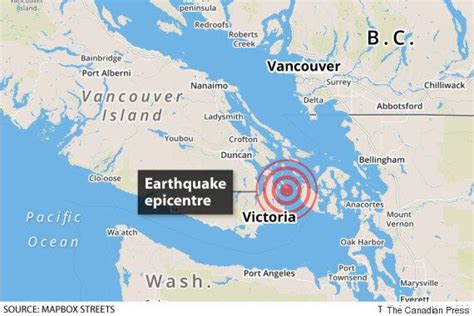Recent BC Quake: 5.1 Magnitude South Coast
The recent 5.1 magnitude earthquake that struck the British Columbia South Coast on [Insert Date of Earthquake] sent tremors throughout the region, reminding us of the seismic activity prevalent in the area. While thankfully major damage was avoided, the event serves as a crucial reminder of the importance of earthquake preparedness. This post will delve into the details of this significant quake, exploring its impact and offering insights into how to stay safe during similar events.
Understanding the Earthquake
The earthquake, with a magnitude of 5.1, originated [Insert Depth and Location of Epicenter]. This relatively shallow depth contributed to the intensity felt across a wider area. Seismologists [Insert Name of Relevant Organization if available] reported numerous aftershocks following the initial tremor. These smaller quakes are a common occurrence after a major event, and though typically less intense, they contribute to the overall seismic activity. The intensity of shaking varied depending on proximity to the epicenter and local geological conditions. Areas closer to the epicenter likely experienced stronger shaking.
Impact and Response
While initial reports suggest minimal damage, it's important to acknowledge the impact the earthquake had on the community. Reports of [Insert any reported damage e.g., minor structural damage, power outages] emerged following the event. Emergency services responded swiftly and effectively, ensuring the safety and well-being of residents. The rapid response highlights the importance of well-trained and prepared emergency services in earthquake-prone regions.
Earthquake Preparedness: Key Steps
The BC South Coast's location on the Cascadia Subduction Zone necessitates a proactive approach to earthquake preparedness. This means having a plan in place to safeguard yourself, your family, and your property. Here are some crucial steps:
- Create an Emergency Plan: Develop a detailed plan outlining evacuation routes, meeting points, and communication strategies. Include essential contact information for family, friends, and emergency services.
- Prepare an Emergency Kit: Stock an emergency kit with essential supplies such as water, non-perishable food, first-aid supplies, a flashlight, a battery-powered radio, and extra batteries. Consider including medications, important documents, and blankets.
- Secure Your Home: Identify potential hazards in your home, such as unsecured objects that could fall during an earthquake. Secure heavy items to prevent them from causing damage or injury.
- Learn Earthquake Safety Procedures: Familiarize yourself with the proper procedures to follow during an earthquake, including "Drop, Cover, and Hold On."
Staying Informed
Staying informed about seismic activity is crucial. Follow reputable sources for updates and warnings, such as [Insert names of reliable sources, e.g., Emergency Management BC, Natural Resources Canada]. Be aware of potential warnings and alerts, and understand the meaning of different alert levels.
Conclusion
The recent 5.1 magnitude earthquake serves as a powerful reminder of the importance of earthquake preparedness on the BC South Coast. By implementing these crucial steps, we can collectively enhance our resilience and minimize the potential impact of future seismic events. Remember, being prepared can significantly reduce the risk of injury and property damage. Stay safe, and stay informed.
